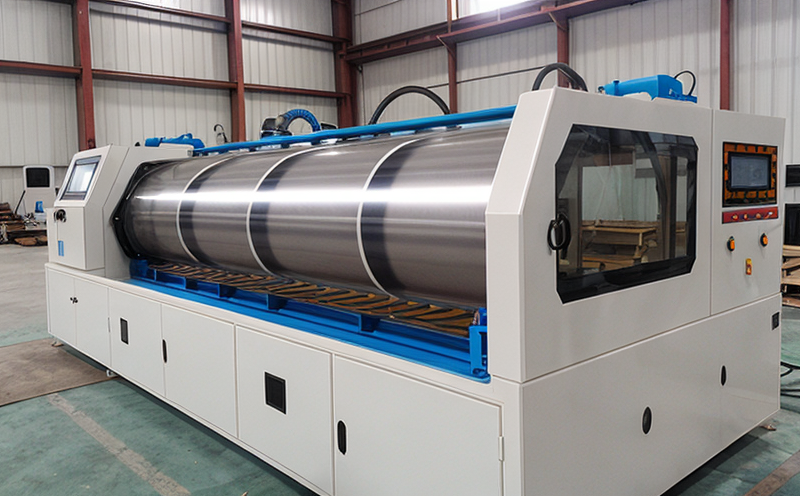GB T 4744 Hydrostatic resistance of laminated fabrics
The hydrostatic resistance (also known as waterhead or water column) test is a critical assessment used to determine the ability of laminated fabrics to resist the penetration of water under pressure. This test is particularly important for materials that are used in sectors such as automotive, aviation, and marine industries where moisture ingress can compromise performance and safety.
The GB T 4744 standard specifies the requirements for determining the hydrostatic resistance of laminated fabrics. Laminates typically consist of multiple layers bonded together to form a single fabric composite. These layers may include textiles, films, foams, or other materials that are designed to provide specific performance characteristics such as durability, flexibility, and water resistance.
The test involves subjecting the sample to increasing hydrostatic pressure (measured in millimeters of water) until it fails either by allowing water penetration through its surface or by sustaining a defined amount of leakage. The result is reported as the maximum pressure sustained before failure, which provides valuable information about the laminate's integrity and performance under stress.
The standard covers various types of laminated fabrics used in different applications. For instance, automotive upholstery may require materials that can withstand harsh environmental conditions without compromising comfort or aesthetics. Similarly, aviation seatcovers must meet stringent standards to ensure passenger safety during turbulent flights. In marine environments, waterproofing is crucial for both structural integrity and occupant health.
Compliance with GB T 4744 ensures that manufacturers deliver products capable of meeting the demands set forth by international and domestic regulations while also providing a competitive edge in terms of product performance and reliability. Understanding how these materials behave under controlled conditions helps engineers optimize design choices, select appropriate raw materials, and ensure consistent quality throughout production processes.
Before conducting this test, it's essential to prepare the samples correctly according to GB T 4744 guidelines. Samples should be conditioned at specified temperature and humidity levels for a minimum of four hours prior to testing. Additionally, any necessary modifications or repairs must comply with relevant sections of the standard.
During the actual test, the apparatus used will depend on whether you're performing single-layer or multi-layer tests. Single-layer samples are tested individually, whereas multi-layer specimens may require more complex equipment capable of handling thicker stacks without compromising accuracy.
Scope and Methodology
| Test Parameter | Description |
|---|---|
| Sample Preparation | The sample must be conditioned under controlled temperature and humidity conditions for at least four hours before testing. |
| Hydrostatic Pressure Application | The pressure is increased gradually until the fabric fails or reaches a predetermined level of leakage. |
| Measurement Criteria | The test measures the maximum hydrostatic pressure (in mmH2O) before failure. |
In this section, we will delve into the specific procedures outlined in GB T 4744. The process begins with sample preparation, ensuring that all samples are conditioned to specified humidity and temperature levels for at least four hours before testing. This step is crucial because it ensures consistency across different batches of fabric, which can vary significantly based on manufacturing processes.
The actual test involves applying hydrostatic pressure gradually until the sample fails or reaches a predetermined level of leakage. During this phase, careful monitoring is required to ensure accurate measurements and consistent results. It's important to note that multi-layer samples may require specialized equipment capable of handling thicker stacks without compromising accuracy.
Finally, once the test has concluded, the maximum hydrostatic pressure (in mmH2O) before failure is recorded as the result. This value provides valuable insights into the material's performance under stress and helps manufacturers make informed decisions about their product designs.
Quality and Reliability Assurance
- Regular Calibration: Ensures that all testing instruments are operating within specified tolerances to produce accurate results.
- Data Verification: Involves cross-checking test data against historical records to confirm consistency and reliability.
- Training Programs: Regular training sessions for personnel involved in conducting tests ensures adherence to best practices and up-to-date knowledge of industry standards.
- Continuous Monitoring: Implementing real-time monitoring systems allows for early detection of any deviations from expected outcomes, enabling prompt corrective actions.
The quality and reliability assurance process is crucial in maintaining the integrity of GB T 4744 hydrostatic resistance tests. Regular calibration ensures that all testing instruments are operating within specified tolerances to produce accurate results. Data verification involves cross-checking test data against historical records to confirm consistency and reliability.
Training programs play a vital role in ensuring adherence to best practices and keeping personnel updated on the latest developments in the industry. Continuous monitoring through real-time systems enables early detection of any deviations from expected outcomes, allowing for prompt corrective actions if necessary.
International Acceptance and Recognition
The GB T 4744 standard has gained widespread recognition across various industries due to its stringent requirements and rigorous testing procedures. Many international standards organizations have adopted similar methodologies for evaluating the hydrostatic resistance of laminated fabrics, reflecting the growing importance placed on ensuring product quality.
For instance, ISO 16002-3:2017 provides additional guidance on determining the water resistance of textile materials using various methods. Similarly, ASTM D4287 specifies a procedure for measuring the hydrostatic head pressure of fabrics used in protective clothing. These international standards complement GB T 4744 by offering broader applicability and flexibility depending on specific application needs.
Adherence to these standards not only enhances global market access but also fosters collaboration among manufacturers, researchers, and regulatory bodies worldwide. By aligning with internationally accepted practices, companies can demonstrate their commitment to excellence in product development while meeting strict quality control measures.





